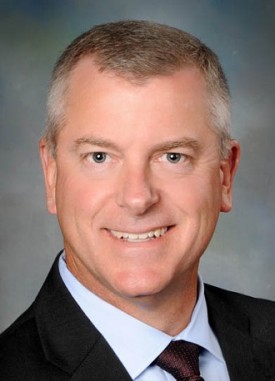Care Standardization Key to Healthcare Revenue Cycle Excellence
Health systems can achieve healthcare revenue cycle excellence through care standardization, but physician and executive leadership is needed, an industry expert stated.

Source: Thinkstock
- To be named a top health system by Truven Health Analytics and IBM Watson Health, it takes a range of clinical quality improvements and healthcare revenue cycle efficiencies. But for St. Luke’s Health System, one of 15 top health systems in 2017, it started with care standardization.
Bart Hill, MD, the Idaho-based health system’s Vice President and Chief Quality Officer, attributed St. Luke’s clinical and financial improvements cited in the award to his health system’s goal of reducing care variations.
Using Medicare data from 2014 and 2015, Truven Health Analytics and IBM Watson Health reported that each awarded health system reduced healthcare costs while improving the following care quality measures:
• 17.5 percent shorter wait times in the emergency department
• 13.4 percent fewer in-hospital deaths
READ MORE: What Is Healthcare Revenue Cycle Management?
• 8.5 percent fewer complications
• 10.2 percent shorter lengths of stay
“When you standardize your processes and you perform consistently, we have seen fewer of those occurrences that ultimately add extra cost without value, such as readmissions, longer lengths of stay, and more complications,” Hill recently told RevCycleIntelligence.com.
Clinical care variations inherently add to health system and hospital costs while driving care quality gaps among providers in the same organization. For example, hospitals and health systems traditionally use provider preference cards to drive supply chain orders. However, allowing clinicians to use their own preferred supplies leads to care variations, resulting in the supplies representing up to 61 percent of healthcare supply chain spending.
The differences between care delivery at hospitals can also result in higher healthcare costs. A recent JAMA Internal Medicine study revealed that hospital spending varied by 6.5 percent between 2011 and 2014.
READ MORE: Preparing the Healthcare Revenue Cycle for Value-Based Care
At St. Luke’s Health System, hospital care variations were not a new challenge. “We have seven hospitals in our health system and every hospital has a bit of its own unique culture,” said Hill.
However, he stated that health system leaders helped each hospital understand that standardizing care delivery would benefit the organization and its patients by advancing care quality while decreasing healthcare costs. In other words, adding value to care delivery.
Care standardization allows health systems to better track and improve costly adverse healthcare events for patient populations with high-risk conditions, such as sepsis, heart failure, stroke, and pneumonia.

“By standardizing it, you reduce the variation in care and you can track and measure lengths of stay, readmissions, complications, and all the things that contribute to excessive and non-value-adding costs,” he said.
Using a data-driven approach and teamwork, St. Luke’s Health System saw significant care variation improvements by standardizing blood management.
READ MORE: Provider Profitability Tops Healthcare Revenue Cycle Concerns
“We found that we had a lot of variation in when providers chose to give transfusions,” Hill explained. “We researched the evidence. We identified an agreed-upon current evidence of when we should transfuse.”
“We set an expectation that when you transfuse blood products, you start with one unit at a time instead of automatically doing two,” he continued. “We said, ‘Don’t do it until it reaches a certain level of blood loss.’ This is kind of outside of the emergent situation, so this is someone who is otherwise stable.”
Consequently, the health system saved nearly $2 million over the course of several years through blood product use standardization.
“At the same time, we have not seen an increase in mortality related to transfusions,” he added. “We have actually seen a decrease in infection rates because we are not having to transfuse as many blood products. From the value perspective, we have got better outcomes at a lower cost.”
Hill added that determining the value analysis for quality improvement activities is key to revenue cycle management success as well as care quality advances. Standardizing blood management may have improved clinical quality, but the health system would not be able to maintain quality improvements if the solution did not also reduce healthcare costs.
“If there isn’t a balance between the two and if the cost is not sustainable, we have to come up with an alternative so we can have the good outcomes but in a cost-effective manner,” he said. “It is very feasible to achieve high performance. It is much harder to sustain it. You have to think about what is it going to take once we achieve our targets and how do we keep them.”
A crucial component of sustaining financial and quality improvements is to tackle each initiative one at a time, he pointed out.
“We first started out by simply looking at mortality from sepsis,” he explained. “When we saw the success we had, we said, ‘Boy, if we were that successful with sepsis, what’s our next biggest area?’ And it was around heart attacks. And then we went after strokes. We looked at complications. We started addressing patient experience because we saw opportunities there. We are now looking at some of our financial opportunities.”
At the same time, health system leaders should not lose focus on projects that successfully reduced health system costs and improved care quality.
“We monitor our performance,” Hill remarked. “If one starts to slip, we stop and say, ‘What is going on in that area? Why did it change? What do we need to do to get it back on track?’ It does not become ping-pong or flavor of the month. This is a campaign. We are going to fix this issue and we go fix something else. But what you just fixed needs to be sustained.”
“It is very feasible to achieve high performance. It is much harder to sustain it.”
To implement value-adding quality improvement projects across several hospitals, St. Luke’s Health System engaged their clinicians and staff members to put their revenue cycle management and care quality goals literally at the center of their workflows. Each department contains a teamwork board that displays issues providers and other staff in the area are facing as well as data to show them their performance.
“Around this board is where they put their data,” Hill explained. “I have an area that is called the central verification office. They will put their turnaround times. They will put their satisfaction scores. They will put their staff injury scores performance. They will put system measures that they are supporting.”
“Everybody can see what performance is going on, but in the center of the board they see their issues that are pertinent to their unit,” he continued.
Placing providers at the center of clinical improvements also helped the health system to achieve quality improvements.
“We have a number of physician leaders across our health system, from our CEO who is a physician, myself as a Chief Quality Officer, and our Chief Information Officer is a physician,” he said. “Executive leaders of our children's hospital, our clinic, our network, are all physicians.”
“Then, we also invest in people to develop skills and competency, whether it is in quality improvements, leadership skills, or other areas for physicians,” he added.
The health system deviated from the traditional healthcare leadership structure to better engage physicians in all aspects of healthcare and encourage them to guide, lead, and achieve within the organization, Hill stated.
“We have developed a physician leadership infrastructure,” he said. “Traditionally, there is the medical staff and the leadership structure. One of our models is to have dyad leadership of a physician paired with an administrative person. They often work together on either service lines, areas of the hospital, children's hospital, things like that.”
While partnering physicians and administrators on the ground helped to bring light to quality improvements, Hill emphasized that executive-level leaders are also critical to realizing success.
“It begins with our leadership at the board level,” he stated. “They set an expectation that the highest priority is to achieve quality safety and individualizing care for the patient. Then, they have been holding us to that as management. They want to see our performance. They want to see our goals. They approve what we are setting year-over-year as our expectations of improvement, both in the quality and safety world, and also the financial.”
“That is a challenge to shift that mindset from where we are at is good enough to there is actually a huge amount of opportunity to do that much better.”
Engaging C-suite level leaders in the quality improvement push also ensured that providers had the resources they needed to achieve clinical and revenue cycle management excellence.
“The leadership is very active in supporting us to be successful,” he pointed out, “Not only are they setting the vision and the expectations, they are assuring that it is adequately resourced, whether it is in some new technology, implementing a common electronic health record, or a da Vinci robot, if that is appropriate. But, again, they're willing to invest in the resources to achieve that singular vision of providing the highest level of quality possible.”
While St. Luke’s earned recognition from their 2014 and 2015 efforts, Hill emphasized that healthcare revenue cycle management excellence is a marathon, not a sprint.
“We have been on this journey for over a decade, not to be a top health system, but on a journey to improve our quality,” he said. “What you are seeing now is a reflection of ten years of work. You cannot expect to take it all on at once.”
Like with most journeys, the health system experienced several bumps along the way, such as communication breakdowns and fostering a culture of improvement.
“That is a challenge to shift that mindset from where we are at is good enough to there is actually a huge amount of opportunity to do that much better,” he explained.
Building on the culture of improvement mentality, Hill added that his health system continues to encounter challenges on the path to healthcare revenue cycle management excellence.
“Another challenge is we still need to drive down our costs,” he mentioned. “I have had a chance to look at the detailed Truven report and our inpatient expenses are still way too high. Whether it is supply chain and pharmaceutical costs or flexing our labor to our volumes, those are all opportunities that we have to become more efficient in our operations.”
Embarking on the journey to healthcare revenue cycle and care quality excellence may prove to be a difficult, if not impossible task. But Hill highlighted that the culture of improvement stemming from the journey is worthwhile.
“We are beginning the journey of high reliability now and that is going to be a multiyear journey,” he stated. “It is not something you are probably ultimately going to achieve. But it really changes the mindset where people become absolutely focused on is this process working as well as it could and how could it be improved.”
